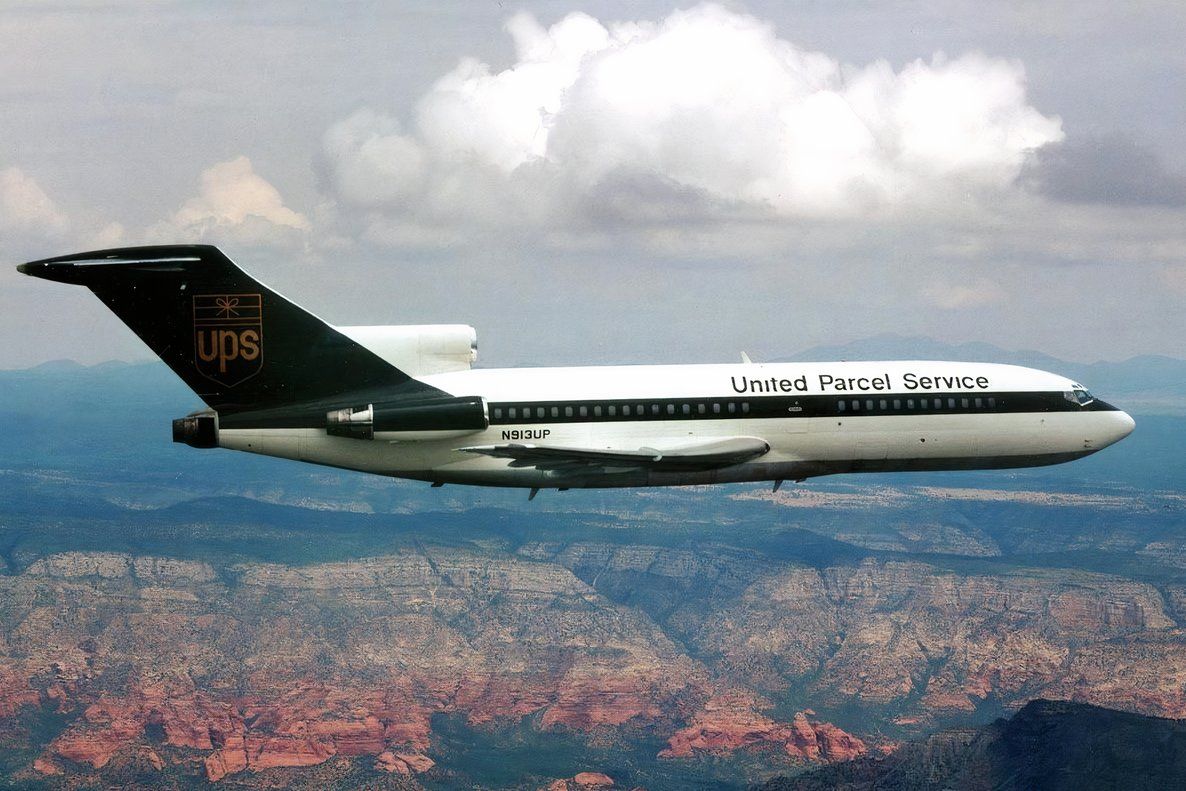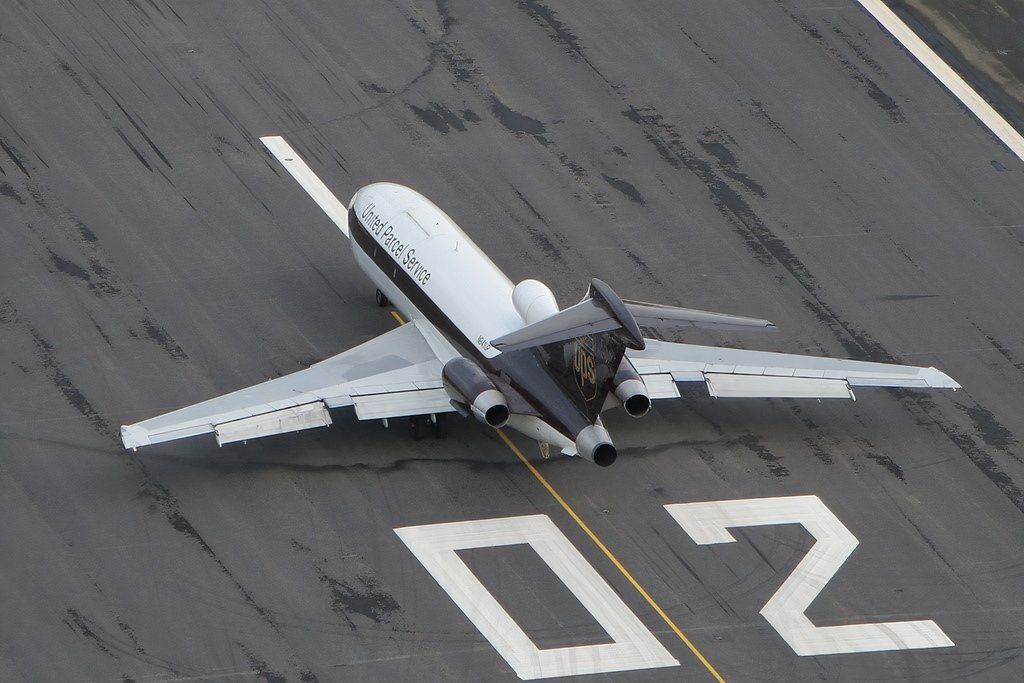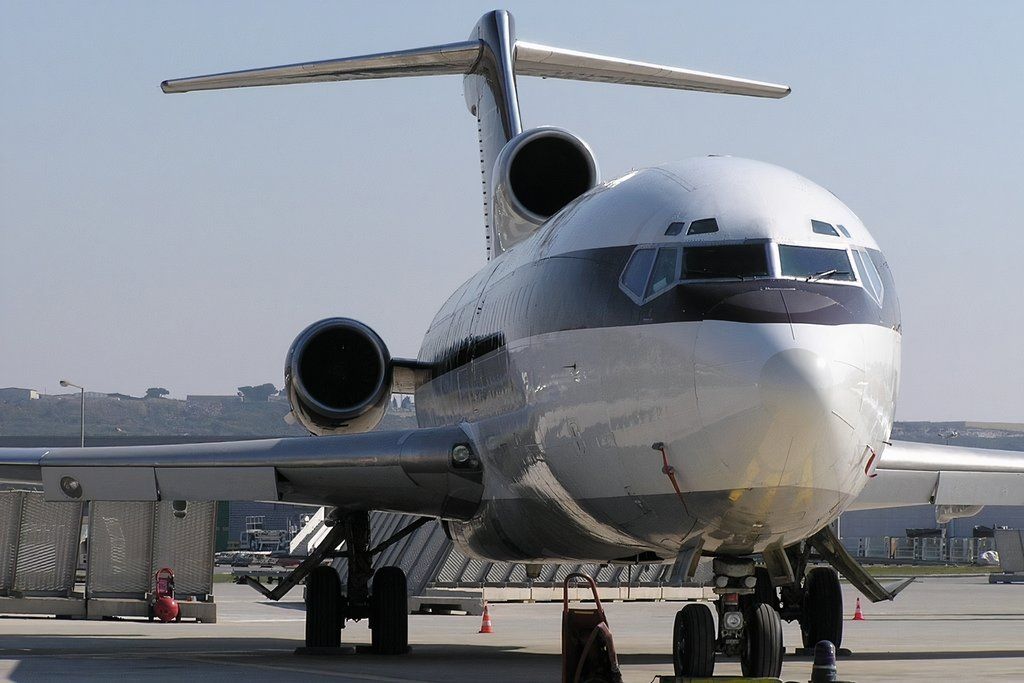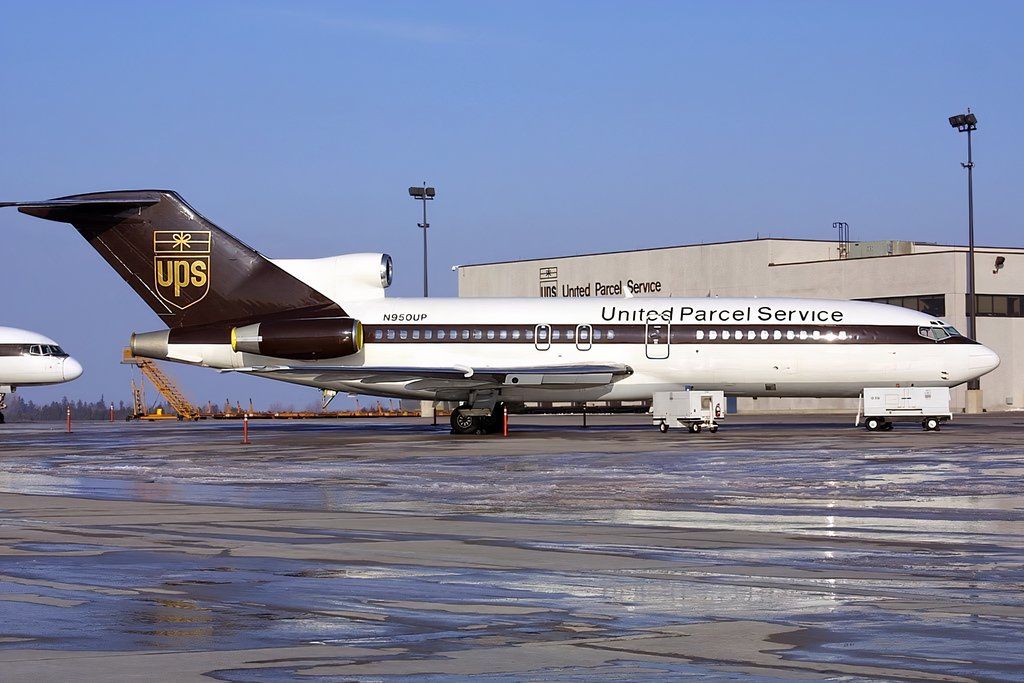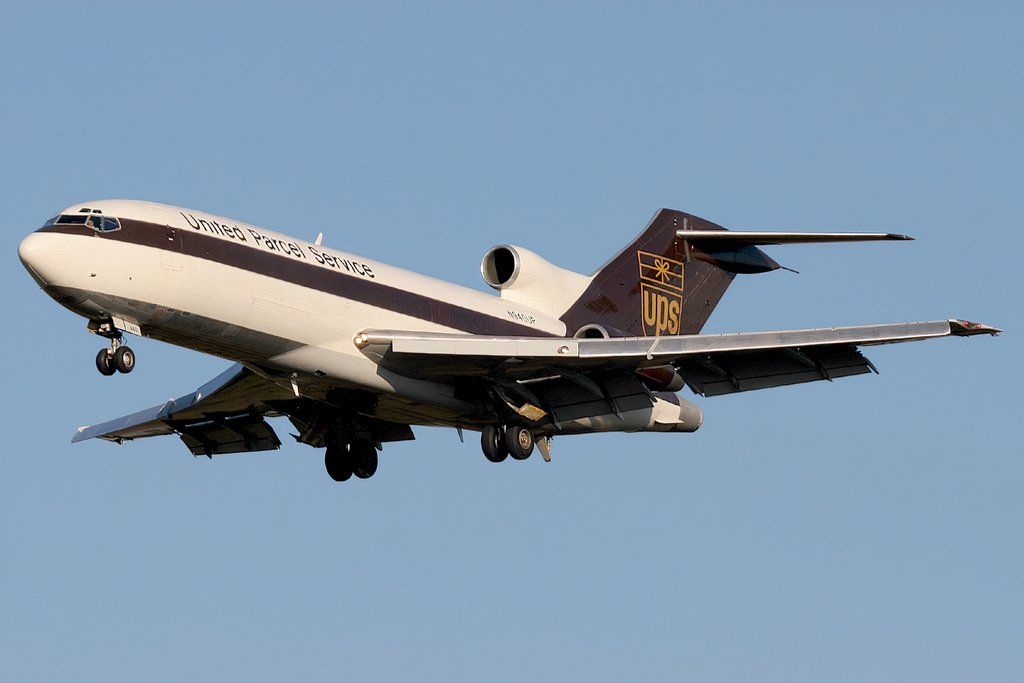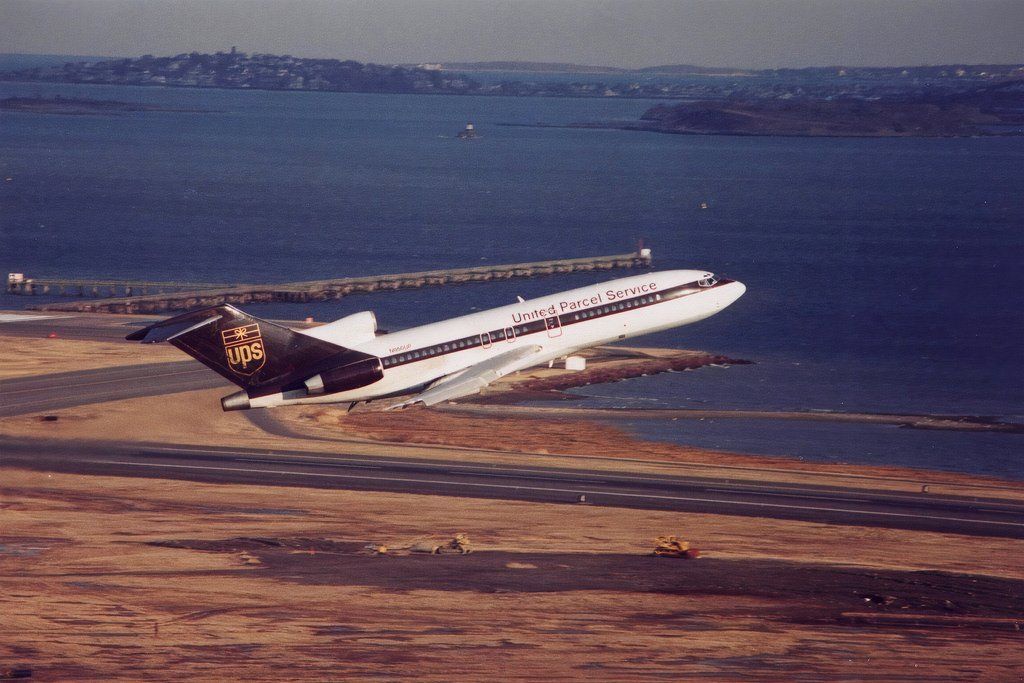Summary
- Back in the 1990s, UPS once operated a profitable passenger service on weekends, utilizing converted cargo aircraft.
- The service, known as the ‘Quick Change Program’, featured B727-100QFs converted for passenger flights to sunny destinations.
- The service was short-lived due to cargo proving to be more profitable, high wear and tear on the aircraft, revenue unpredictability, and range limitations.
We all know UPS. We see its ubiquitous brown trucks delivering parcels in our neighborhoods, and if you’re an aviation geek, you know it as the second-largest cargo airline in the world. It utilizes nearly 300 aircraft across more than 800 destinations, and is surely set to see its operations expand further in the years ahead after recently being chosen to replace Fedex as the primary air cargo provider for the United States Post Office.
But did you know that there was a time when UPS flew passengers? It was a profitable but ultimately short-lived experiment started back in the 1990s, but many people still remember the service very fondly.
Photo: UPS Social Media
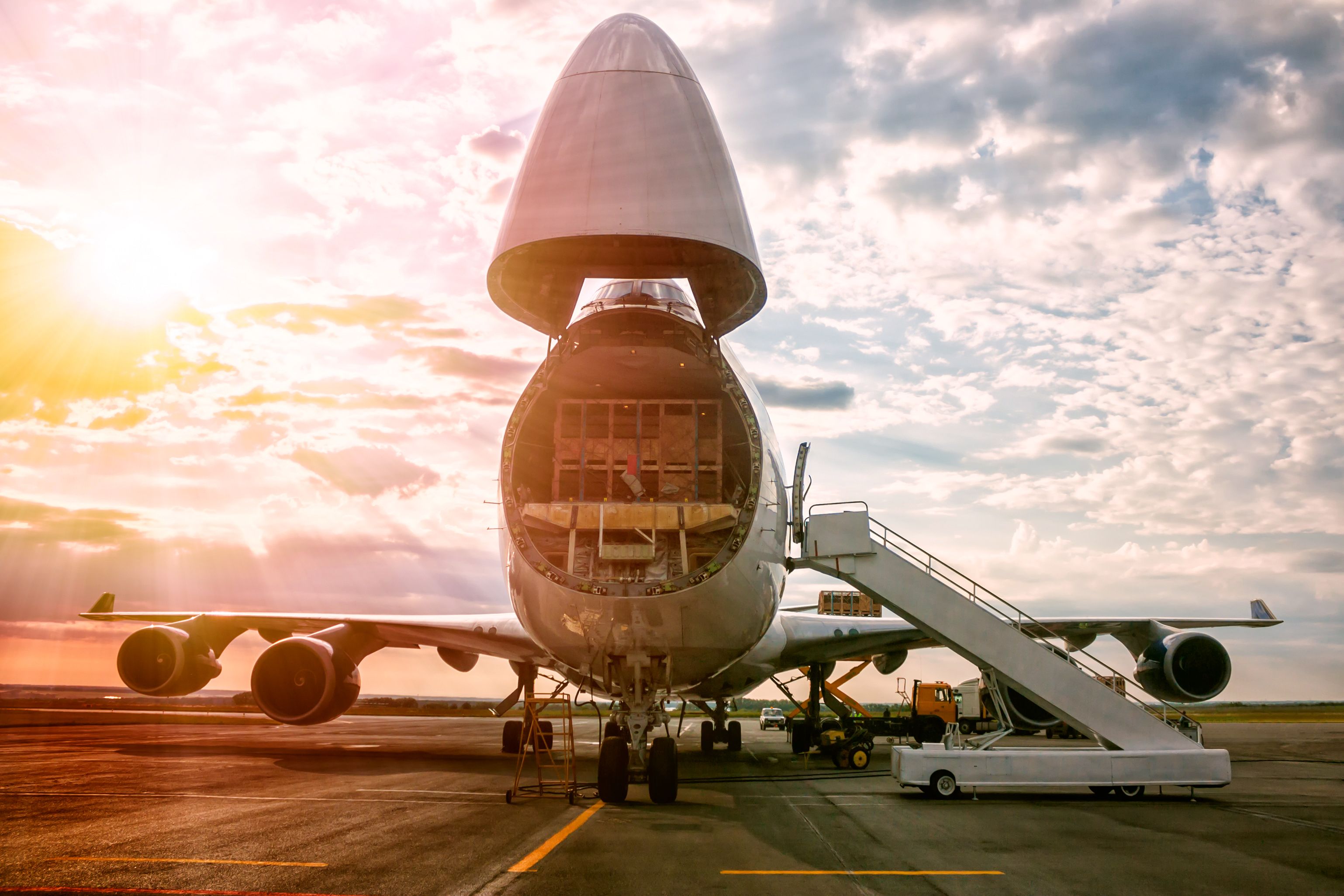
Related
These Are The 5 Biggest Cargo Airlines Worldwide By Fleet Size
Despite challenges, top cargo airlines continue to evolve and expand their fleets.
All about aircraft utilization
The passenger service originated as a brainstorming idea by UPS employees. In 1996, cargo aircraft were typically very busy during the course of a working week, but most sat idle over weekends. This was a time when Amazon was barely a year old, and e-commerce was still a thing of the future, so US parcel volumes were a tiny fraction of the 22 billion parcels that will be shipped in 2024. There just wasn’t the demand for 24/7 utilization of cargo aircraft like there is today.
Photo: S Bennediktsson | UPS Social Media
The idea that the employees came up with was to utilize those same aircraft to generate new revenue from passenger flights to sunny vacation destinations during the idle weekends. To do this, the aircraft would be converted from cargo to a passenger configuration in a matter of hours on a Friday evening, and then returned to freighter status on a Sunday evening before the start of the next week. As Paul Martins, director of passenger operations for UPS explained:
“The bottom line is that you have to be smarter with the assets that you own and how you can get as much bang for your buck as possible. No airline in the world makes money when planes are sitting on the ground.”
Enter the 727
At the time, UPS operated a fleet of more than 50 Boeing 727s, all of which were former passenger aircraft. UPS selected five B727-100 models to be used for what would become known as the “Quick Change Program”. UPS had recently performed a major upgrade to its -100 fleet, replacing noisy Pratt & Whitney engines with quieter, more efficient Rolls-Royce Tay turbofans, making them Stage III compliant. The re-engined aircraft was designated B727-100QF (Quiet Freighter), and deemed to be ideal for passenger service.
You can spot a B727 with the Rolls-Royce Tay engine conversion by looking at the intake for engine #2 in the tail. A straight S-Duct indicates an original Pratt & Whitney engine (top photo, below), while a Tay engine has a noticeable bulge in the S-Duct (bottom photo, below) as it has 30% higher airflow requirements.
As they were all former passenger aircraft, the B727-100QFs still had windows as well as the necessary plumbing and wiring for passenger service. But while this made them a good choice for conversion to B727-100QC (Quick Change) airliners, the actual effort to get the program underway was considerable and took over a year to complete.
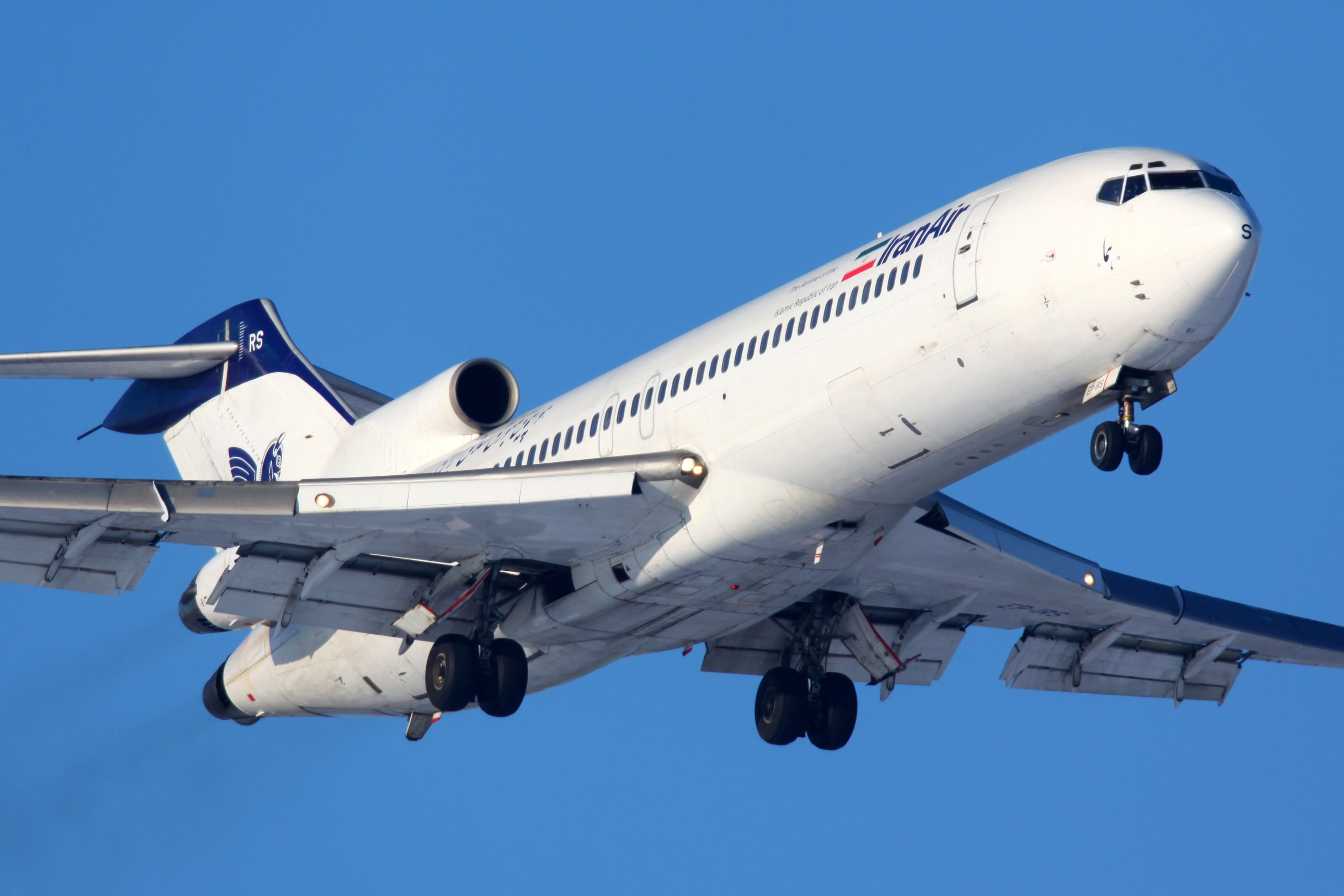
Related
The Rise & Fall Of The Boeing 727
The story of the US manufacturer’s narrowbody trijet.
Changes to aircraft
The largest changes were physical. Each aircraft had to have two permanent passenger lavatories installed, and the cabin interior had sidewall liners and overhead trim added, with flight attendant seats installed on the bulkheads. Quick-install overhead bins, complete with emergency oxygen masks, were also introduced and could be put in place in minutes.
Photo: Provence S | UPS Social Media
For seating, flat pallets were built holding two rows of six seats and a carpeted aisle, which could be brought into the aircraft through the cargo door and rolled into position. Similarly, whole galleys were also built on pallets to be rolled in, and wiring harnesses were used to quickly connect power to the galleys, lavatories, lighting and communication systems. All told, the B727-100QC was able to be converted from an empty cargo aircraft to one able to carry 113 passengers in under four hours. (See video below)
A vacation-minded experience
UPS retained its own pilots for the service, although they did have to undergo additional training for passenger operations. Cabin crew were brought in from a staffing agency that provided experienced cabin crews to smaller airlines. The uniform was bright blue with a cheerful sunshine necktie, to match the ambiance of vacationers heading to sunny destinations.
Photo: Andy Vandeheyden | UPS Social Media
Martins explains what the goal was:
“Of course we fleetingly thought about using UPS brown uniforms, but decided it would be too dull. Nearly all of our flights were pleasure trips, people going on vacation. So the atmosphere was fun and pleasant. We matched that with a fresh blue interior and the flight attendants were dressed in blue and gold. It was all a vacation-mindset.”
A short-lived service
The first passenger flight took place in March 1997, a charter flight from Pittsburgh to Orlando. UPS never actually sold tickets. Instead, the airline had contracts with all-inclusive tour companies and cruise lines, and flew from the Northeast and Midwest to Florida, the Caribbean, Cancun and Costa Rica. It also flew charters for college and pro sports teams, auto racing teams, musicians and for politicians and their press corps.
Photo: Ralph Deunas | UPS Social Media
While UPS maintained that the service was profitable, it lasted barely four years and was ultimately suspended in late 2001 for a number of reasons:
- Not as profitable as cargo: As e-commerce started to boom, charter flights were not as profitable as packages, and UPS chose to return the aircraft to purely cargo operations.
- Wear and tear: Despite the innovative cabin designs, the quick-change aircraft were picking up excessive wear and tear, and incurring maintenance costs that were far higher than anticipated.
- Unpredictable revenue: Charter revenue was always unpredictable, but especially so after September 11, and the outlook for future operations was bleak.
- Aircraft age: The B727-100s were all delivered to Eastern Airlines in 1967. At 34 years old, they were nearing retirement and replacements were needed, requiring further investment.
- Aircraft range: The -100s also had limited range, necessitating refueling stops for flights beyond Florida, which made them less efficient to operate.
Photo: Greg Deleg | UPS Social Media
Interestingly, while the quick change concept didn’t work out as planned for UPS, Boeing actually offered a B727 QC variant direct from the factory. It delivered 111 of them to passenger carriers such as Eastern and United Airlines, suggesting that passenger airlines had more success with quick change cargo operations. Meanwhile, UPS ultimately phased out all of its B727 aircraft by 2007, bringing an end to operations with the type that had been the backbone of the airline for two decades.
Did you ever fly on a UPS passenger service? Would a ‘quick change’ business model be more viable with modern cargo aircraft? Tell us about your thoughts and experiences in the comments.


